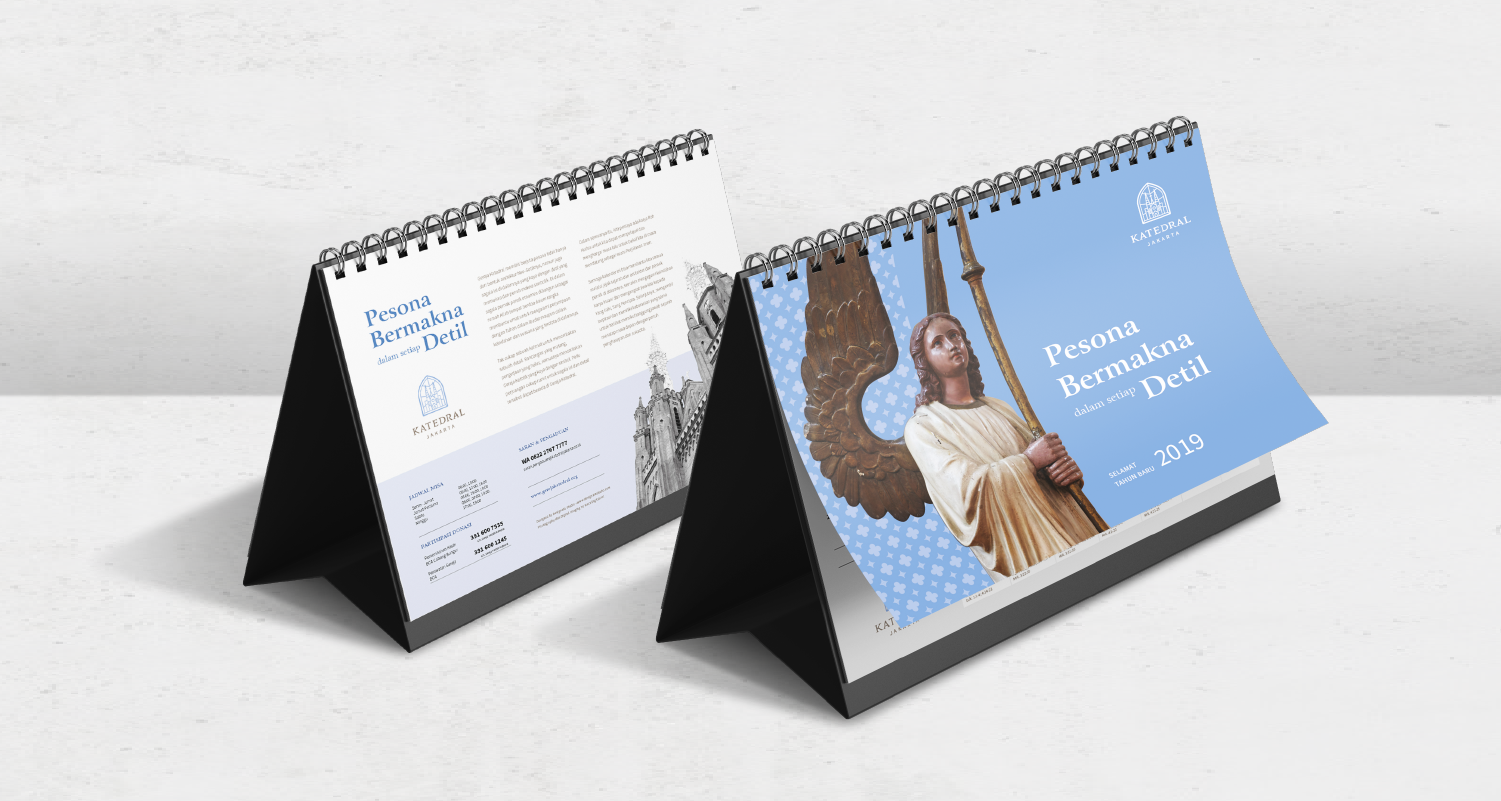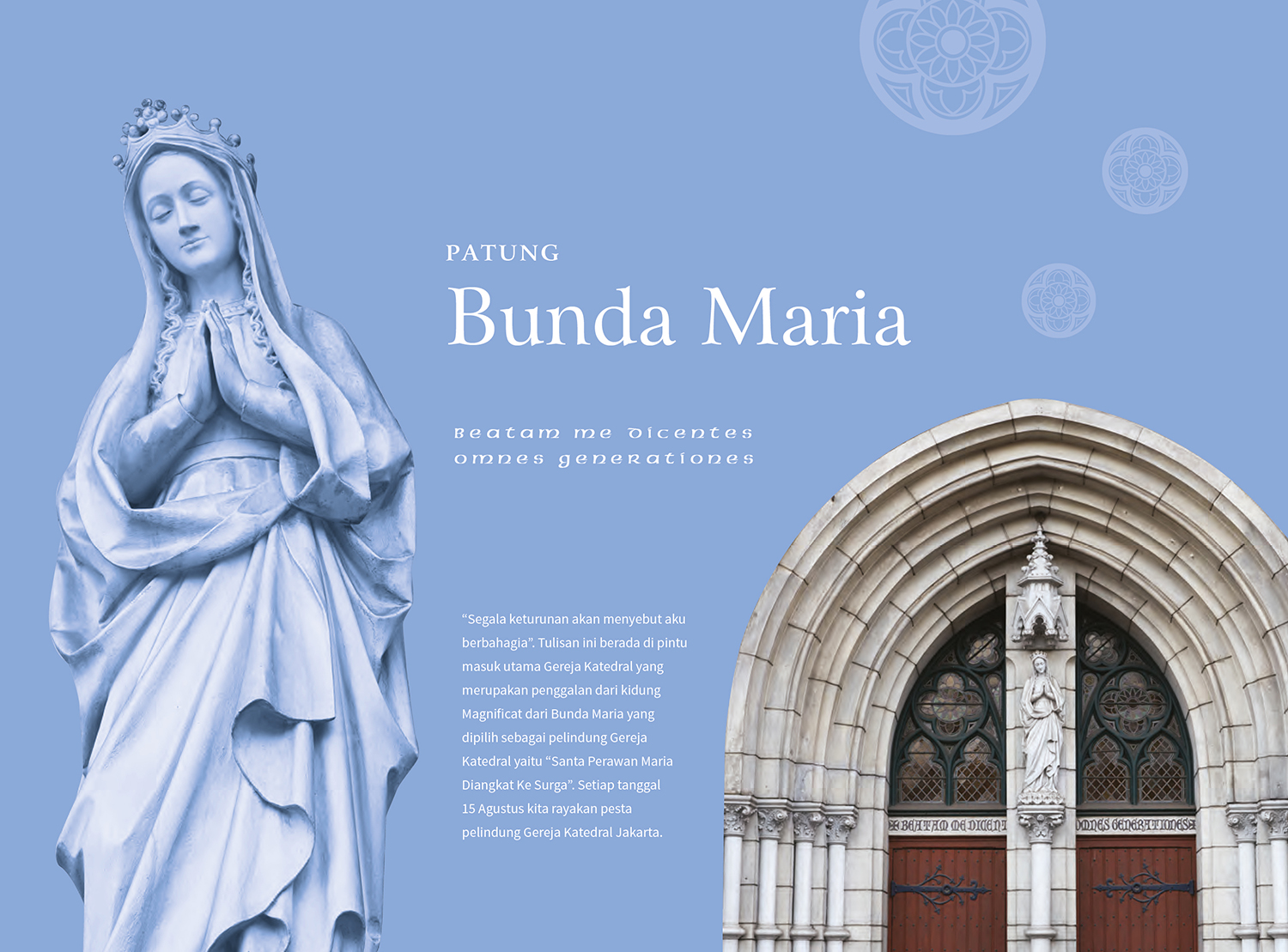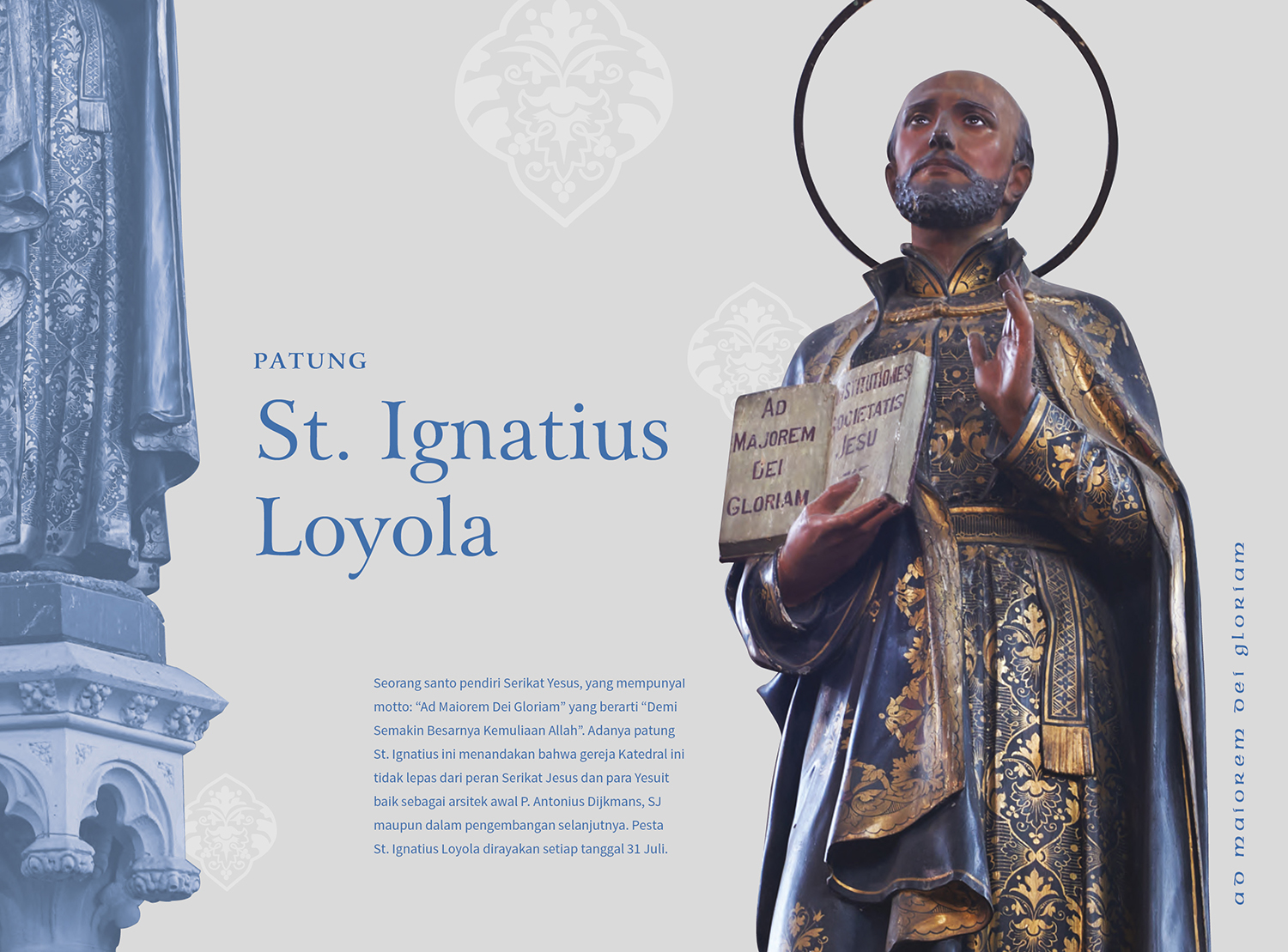The Portrayal of Historical Values and Future Vision
The Jakarta Cathedral Church possesses a unique charm, marked by its historical significance and stunning architecture. This iconic building holds value not only for Catholics but also for the broader community of Jakarta. Its design features both explicit and implicit symbols commonly found in Catholic churches, making it a fascinating structure.
Recognizing the need to refresh the Cathedral's visual identity, we believe it is time to revitalize its representation in order to engage a younger congregation and encourage more active participation in the Cathedral community.
The Challenge
Before we embark on designing a new visual identity, we first need to study the Cathedral's history, its architectural uniqueness, how the public perceives the church, and its transforming vision and values. A thorough exploration is essential to ensure that we capture all the significant details of the Cathedral. Our goal is to create a single divine symbol that embodies the essence of the Cathedral by combining these elements.
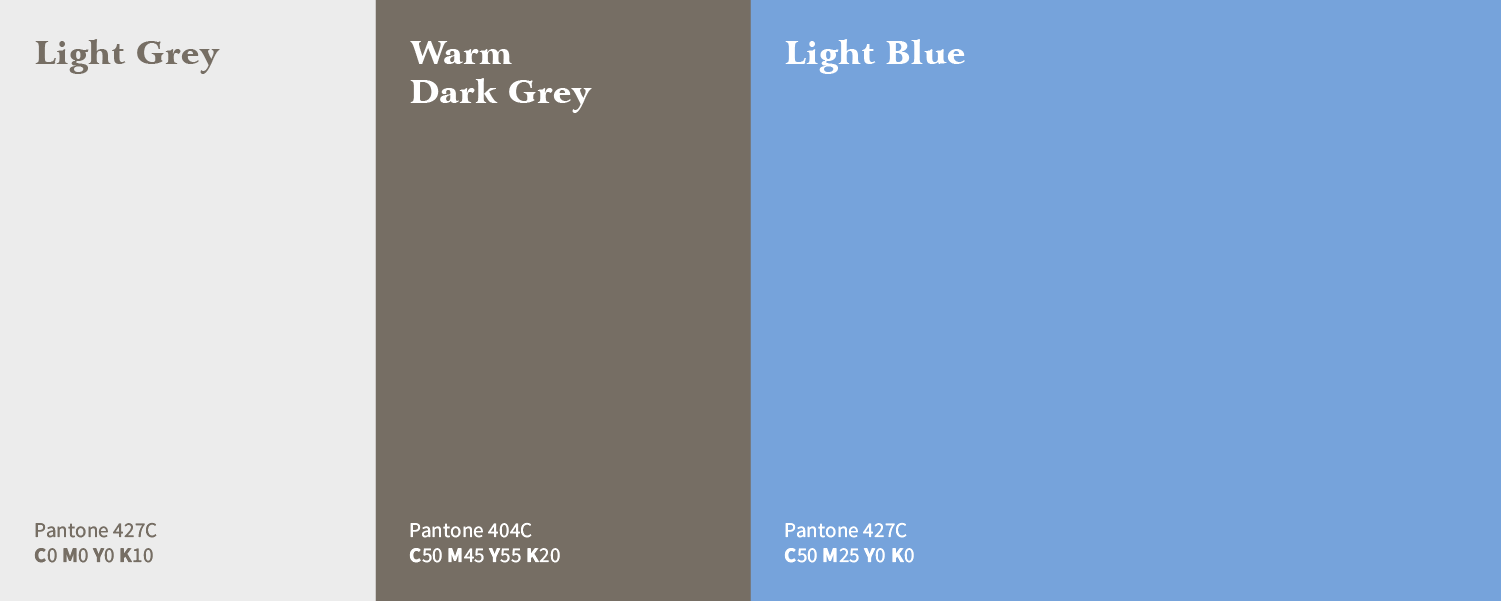
The Solution
After completing our analysis and exploration, we determined that the shape of the Cathedral is its most distinctive feature. The facade, characterized by its two neo-gothic towers, offers an alluring view that appeals to both Catholics and the local community.
Inspired by this insight, we decided to use the Cathedral building itself as the logo. The design illustrates the two-tower gothic structure framed by vertical lines that symbolize a focus on God. These lines also represent a glowing light, reflecting the Cathedral's vision to radiate kindness to its surroundings. Each connecting line signifies the relationships among all members of the church, united as a family. The logotype was crafted to align with the font style of the neo-gothic era, with modern adjustments for relevance. The final touch is a light blue color, representing the Cathedral's patron saint, the Blessed Virgin Mary. Together, this logo portrays the Cathedral's commitment to reformation while maintaining its core values amidst changing times.
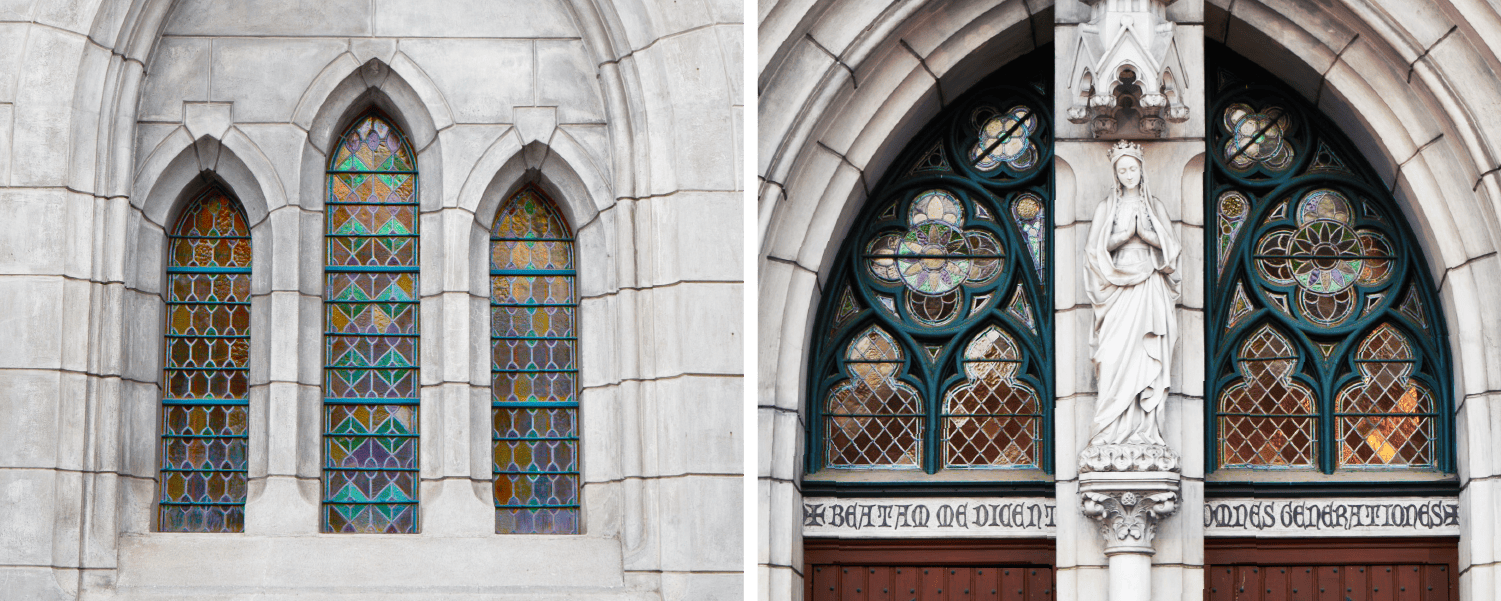
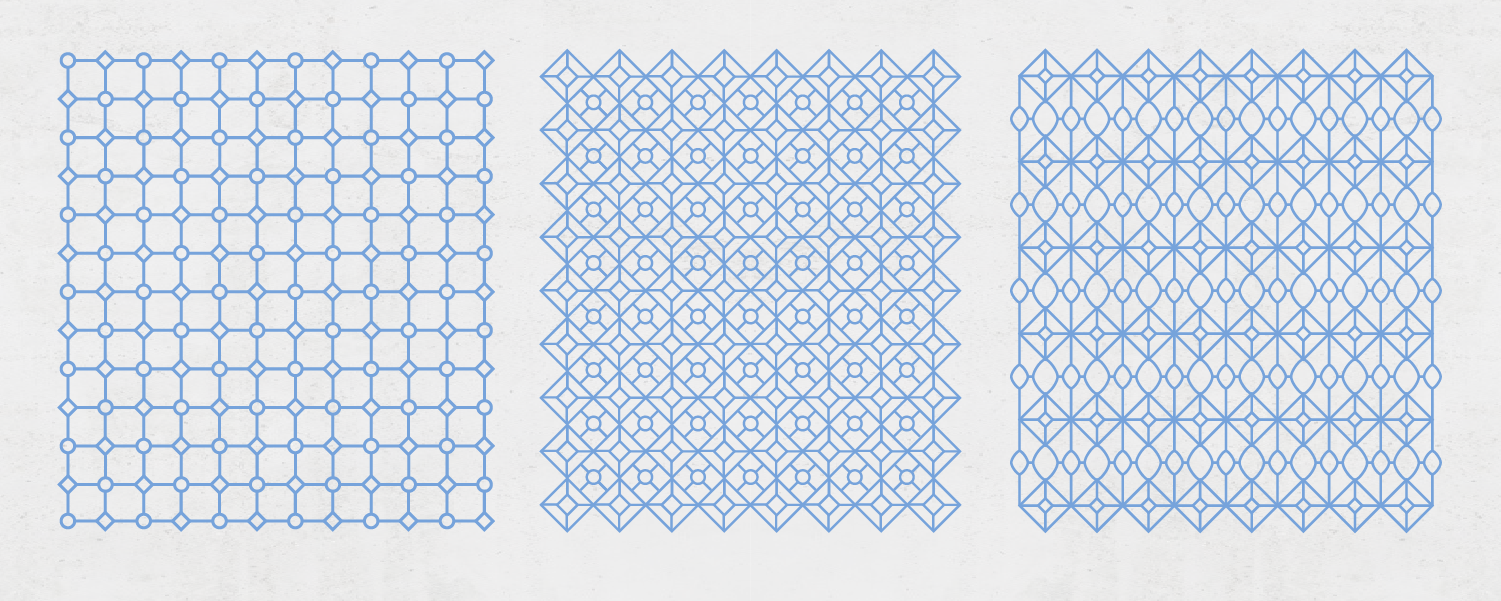
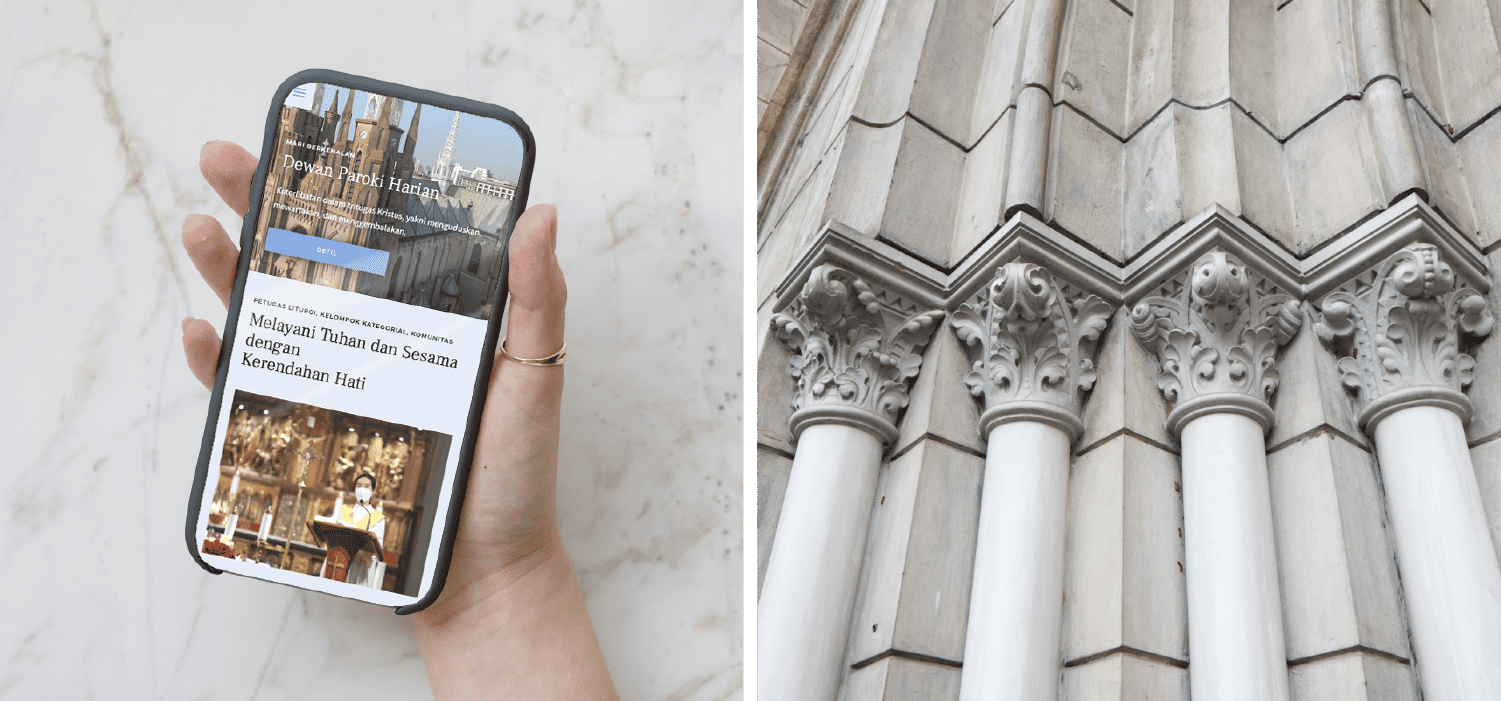
To complement this renewed identity, we developed supporting graphic elements for various applications, including stationery, websites, and signage systems. Our designs draw inspiration from the Cathedral's intricate details, such as the stained glass and carvings. Some graphic patterns were adapted from the stained glass artwork found in the church. We also designed a series of icons that align with the new logo for use in signage, categorized by function—whether for information, directions, or warnings. This signage design is still in development as renovations of the buildings continue.
Additionally, we designed the 2019 calendar as a means to effectively introduce the renewed identity while showcasing the Cathedral's historical relics. With a modern yet rooted identity, the Cathedral invites its younger congregation to actively participate in the Catholic community.
